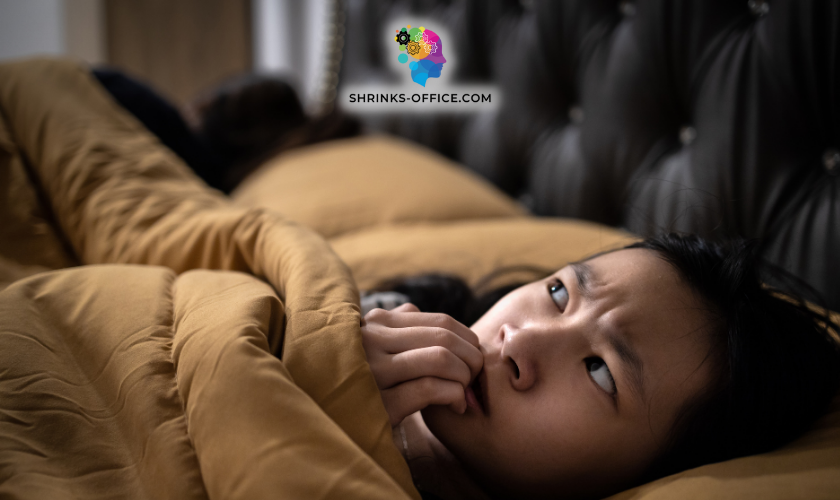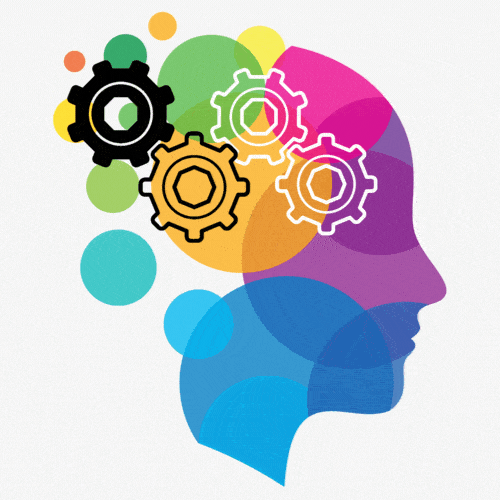In today's fast-paced world, finding moments of mindfulness can be a challenge. Embracing "The Power of Now"...

Psychosis is a mental illness in which a person has delusions (false beliefs such as thinking people are talking about them or believing they can control the weather) and hallucinations (seeing, hearing, feeling, tasting, or smelling something that is not actually there).
- False beliefs that are not based in reality
- Sensory experiences that are not real
- Disorganized thinking
- Paranoia
- Social withdrawal
- Mood swings
- Depression
- Anxiety
- Unusual behavior that is out of character or doesn't make sense
- Antipsychotic medication
- Psychotherapy
- Family therapy
- Support groups
- Hospitalization
- Learn as much as you can about psychosis
- Encourage your teen to seek professional help, and support them in their treatment
- Provide a stable and supportive home environment for your teen
- Help them find healthy ways to manage stress
- Connect with support groups
Mental health disorders are common in teens, with a prevalence rate of 31% among adolescents[1]. Psychosis alone has a prevalence rate of 5%-8% among teens and can cause significant distress, disruption, and disability[2]. This blog will discuss psychosis in teens, its symptoms, causes, diagnosis, and treatment options.
Psychosis is a mental illness in which a person has delusions (false beliefs such as thinking people are talking about them or believing they can control the weather) and hallucinations (seeing, hearing, feeling, tasting, or smelling something that is not actually there).
Psychosis is often a symptom of schizophrenia, a psychotic disorder that can cause long-term disruption in a person's ability to think, act, behave, and relate to others [3]. However, not all adolescents who experience psychosis have schizophrenia—it can also be a symptom of bipolar disorder, major depression, dissociative states, or other psychiatric disorders[2].
Helpful tip
Psychosis alone has a prevalence rate of 5%-8% among teens and can cause significant distress, disruption, and disability[2].

According to NIH, psychosis symptoms in teens are as follows. [2]
These psychosis symptoms are usually not seen in teens.

The most common cause of psychosis is a mental disorder. [2] A few conditions that can cause psychosis are schizophrenia, bipolar disorder, mood disorders, schizophreniform disorder, and schizoaffective disorder. However, a person experiencing psychosis may have psychotic symptoms without having any other psychotic illness [4].
If the parents or siblings of adolescents have a family history of childhood-onset schizophrenia, it is more likely that the adolescent will develop a psychotic disorder [2].
Childhood trauma, environmental factors such as neglect, physical and emotional abuse can also act as a trigger for the onset of psychosis in adolescents. Stressful incidents, such as the death of a parent or other family member, can also increase the risk [2].
Did you know?
Teens with PTSD are more likely to experience psychosis, as trauma can significantly impact their mental health and perception of reality.
The use of certain illicit drugs, such as marijuana, cocaine, and LSD, increases adolescents' risk of developing psychotic symptoms [2].
While not common in teens, certain medical conditions can also cause early psychosis often, such as brain tumors or cysts, stroke, HIV, and epilepsy[5]. Teens with these conditions are more likely to experience psychotic symptoms than those without them.

Before diving into the specifics of psychosis, it's crucial to have a basic understanding of the brain's key regions and their roles:
During a psychotic episode, several changes occur in the brain:

The changes that occur in the brain during a psychotic episode can help explain the diverse symptoms of psychosis:
Understanding the neuroscience of psychosis provides critical insights into the complex interplay of brain regions and neurotransmitters in this condition. It also underscores the importance of continued research in this field, as a deeper understanding of these processes could pave the way for more effective treatments in the future. [11]
The diagnosis should be made by a mental health professional. Your healthcare provider will perform a mental health screening to assess your teen's symptoms and mental state. They may make psychiatric diagnosis and also recommend a physical exam, lab tests, and imaging tests to rule out any medical conditions that could be causing psychosis symptoms[6].
The Diagnostic and Statistical Manual of Mental Disorders (DSM-5) requires the onset presence of certain conditions for more than six months for each psychotic illness[2]. For example, schizophrenia requires at least two of the following symptoms, such symptoms as delusions, hallucinations, grossly disorganized or catatonic behavior, disorganized speech, and negative symptoms (such as flat affect).
Mental health screening can help diagnose early signs of these mental health concerns, which can be used to provide effective treatment strategies.

The parents and other family members can monitor the teens' behavior and provide support to them. They should also create a safe and stress-free environment for the patient. For example, the patient must not be responsible for family responsibilities such as babysitting the siblings or taking care of the household chores.
Cognitive Behavioral Therapy (CBT) can be an effective tool in altering dysfunctional behaviors. It helps the patient to understand their thought patterns and beliefs system in order to help them identify and change their faulty ways of thinking[2].
Helpful tip
Therapy can be a lifeline for teens with psychosis. It helps manage symptoms, provides coping strategies, and enhances their quality of life. Never underestimate the benefits of therapy!
Antipsychotics can be used efficiently to treat prodromal psychotic symptoms. Many typical and atypical antipsychotics can reduce the visual hallucinations and delusions associated with psychotic episodes and improve functioning. However, they may have some side effects, such as weight gain, extrapyramidal symptoms, and metabolic abnormalities[2].
Psychosis, like many mental health disorders, is often misunderstood. Misconceptions about psychosis can create barriers to understanding, compassion, and appropriate treatment. Let's debunk some common myths and shine a light on the realities of this condition.
Common Misconceptions About Psychosis

Stigma surrounding mental health conditions can have severe repercussions, particularly for adolescents. Teens already navigate a challenging phase of life, and the added burden of stigma can exacerbate their struggles.
To fully grasp the significance of these misconceptions and stigmas, let's consider some statistics:
Adolescence is often regarded as a tumultuous period, a storm before the calm of adulthood. It's a time of exploration, self-discovery, and growth, but it also carries its unique set of challenges. To truly understand these challenges and their impact on mental health, we must delve into the fascinating world of adolescent brain development.
The adolescent years are marked by significant physical, emotional, and social changes. Teens navigate the precarious path towards independence, grapple with identity issues, and experience the rollercoaster of puberty.
During this period, they face unique challenges:
Helpful tip: Caring for a mentally ill parent can be tough. Remember, it's okay to seek help. Support groups for teens can offer coping strategies and understanding.
The human brain undergoes significant development during adolescence. The brain's 'grey matter', responsible for processing information, peaks just before puberty and then starts to decrease, while the 'white matter', responsible for transmitting information, continues to increase.
Two key areas of the brain undergo significant changes:
The changes happening in the brain during adolescence can contribute to increased vulnerability to mental health issues.
In order to gain a broader understanding of psychosis in teens, it's essential to explore the evolution of its perception and treatment throughout history, as well as to examine current trends and statistics.
Understanding psychosis, particularly among adolescents, has been a journey spanning centuries.
Despite these advancements, the stigma surrounding psychosis and mental health disorders persisted, often leading to delayed diagnosis and treatment, particularly in adolescents.
Understanding the prevalence and impact of teen psychosis is crucial in shaping effective prevention and intervention strategies. Here are some key statistics:
Today, the focus is on early detection and intervention, which have been shown to significantly improve outcomes. There is also increasing emphasis on personalized treatment plans that consider the unique needs of adolescents.
Research continues to explore the genetic and environmental factors contributing to psychosis in teens, and there is optimism that these advancements will lead to better prevention strategies and treatments.
Psychosis in adolescents can present significant challenges in a school environment. Understanding these challenges and finding effective ways to navigate them is crucial for educators and school counselors.
Psychosis can profoundly impact a teen's performance at school. The implications range from cognitive to social aspects.
Did you know? Teens with psychosis who have a secure attachment style often show greater resilience and improved treatment outcomes.
Given these challenges, the role of teachers and school counselors becomes pivotal. Here are some tips on how they can support students with psychosis:
A teen's psychosis doesn't just affect the individual, it can also dramatically impact the dynamics within their family. Understanding these effects and knowing how to navigate them is crucial for families on this journey.
Navigating Family Dynamics: Tips for Families
Despite these challenges, there are several strategies families can employ to cope and provide support:
Imogen, a 27-year-old London resident, began experiencing symptoms of psychosis during her early teenage years. Unaware of the terminology surrounding her condition, she found herself unable to express what was happening to her. Her first major breakdown at the age of 15 led to hospitalization, but the severity of her condition was initially dismissed as bad behavior. However, following a second breakdown at 16, a thorough assessment from a psychiatrist led to a diagnosis of a psychotic episode.
Imogen was eventually diagnosed with bipolar type 1 disorder and autism. She experiences psychotic episodes, depression, and mania, all symptoms associated with her bipolar disorder. Through a combination of anti-psychotic medication, therapy, social work assistance, and self-education, Imogen has learned to manage her conditions. Now a part-time student at Birkbeck University, she is committed to advocating for mental health awareness, driven by her own experiences with psychosis.
Chris Crutchley, a 37-year-old individual diagnosed with Bipolar Disorder during his college years, has chosen to share his story publicly for the first time. Despite fears of societal stigma and potential professional setbacks, Chris feels compelled to contribute to efforts to end the stigma around mental health. The recent birth of his first child, an event that seemed uncertain for Chris due to his mental health struggles, has further motivated him to share his story, hoping it can aid others who suffer from mental illness and foster understanding of the obstacles faced when seeking care.
Chris was a two-sport athlete on an academic scholarship in college, with no prior history of mental illness. In 2001, he experienced his First Episode Psychosis (FEP), characterized by a gradual decline into psychosis over several days. Despite his mental state fluctuating between moments of clarity and delusion, his family was quick to seek medical help, contributing significantly to his recovery. The average time for a US citizen to receive care after their first psychotic episode is 74 weeks, starkly contrasting with Chris's early intervention.
The years following were filled with challenges, including readjustments to daily routines, emotional struggles, medication side effects, and even hospitalization due to a lapse in medication. Chris has since learned to own his story, sharing his experiences with trusted individuals and educating himself about mental illness. He now cherishes the opportunity to be a father and aspires to help others who face similar struggles.
Caring for a kid with psychosis can be demanding and stressful. Therefore they need a lot of support from their family, friends, and community.
Early education on coping strategies and stress management can help a lot in managing their stress[7]. Further, caregivers can also opt for community mental health services such as family therapy and support groups.
You may also receive help from an online therapist that protects confidentiality to help cope with the stress.
Prolonged periods of untreated psychosis can worsen the symptoms and interfere with one's daily activities. Therefore, early intervention is vital for faster recovery. With proper treatment, there is a 25% chance of recovering completely, and about 50% of patients will be able to live a normal life, although they suffer from continued episodes[8]. So, look for early warning signs of psychosis and ask for help from a mental health professional when needed.
Yes. Teens may experience all types of mental disorders regardless of their age. This includes psychosis, depression, anxiety, and more.
In some cases, psychosis can go away without treatment. But, in most cases, treatment will be necessary as it usually takes a long time for someone to notice psychosis symptoms in individuals.
In today's fast-paced world, finding moments of mindfulness can be a challenge. Embracing "The Power of Now"...
In our fast-paced world, finding moments of tranquility can be a challenge. Meditation apps offer a convenient...
In our fast-paced world, taking time for self-reflection and mindfulness is essential for well-being. Journaling can be...
In today’s fast-paced world, managing stress has become an essential aspect of maintaining overall well-being. Two popular...
Dissociation can be a challenging experience, especially the one that happens at work. Are you experiencing dissociation?...
Bionic reading transforms the reading experience for ADHD individuals by guiding the eyes for focus and understanding. Dive into the world of bionic reading.
Explore the complexities of postpartum depression and genetics in our blog 'Is Postpartum Depression Hereditary?' for insights into maternal mental health.
